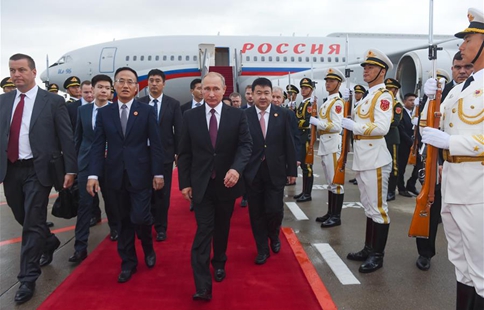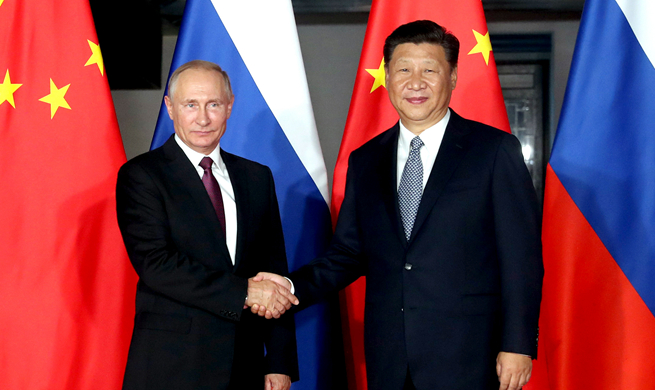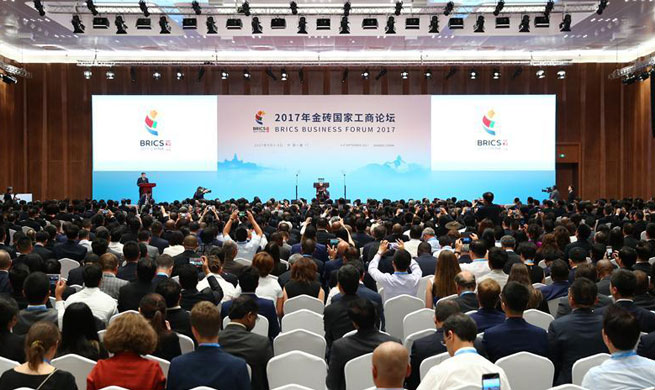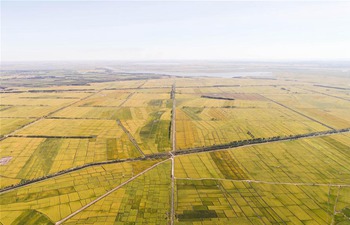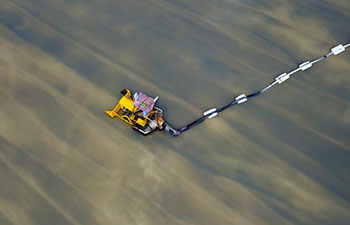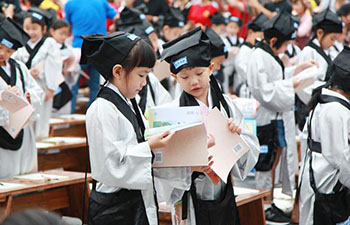WASHINGTON, Sept. 3 (Xinhua) -- As the United States is undergoing a cycle to update its nuclear arsenal, flexibility, accuracy and interoperability are the key features that will be enhanced, an nuclear policy expert told Xinhua in an interview.
Military labs and contractors are developing interoperable warheads, missiles with a flexible yield and weapons fine-tuned for accuracy, according to Hans Kristensen, Director of the Nuclear Information Project at the Federation of American Scientists.
The United States is currently under going its fourth or fifth major cycles to update its nuclear arsenal since the 1940s, Kristensen said, as the old weapons would become too expensive to operate after 2030.
Recently U.S. President Donald Trump said his administration is spending "vast amounts" of money on nuclear arsenal and missile defense during a speech about Afghanistan.
The U.S. Air Force on Aug. 23 released two contracts with Lockheed Martin and Raytheon with a total value of 1.8 billion U.S. dollars to commence research on cruise missile technologies, which is essential to the delivery of nuclear weapons.
"There's general interest in U.S. nuclear weapons planning to make weapons in the future more accurate so that they don't need to have as much yield," he said.
A bomb with lower yield would mean less pollution and radioactive fallout, so that ally countries and nearby U.S. troops would be better protected, Kristensen said.
"They might want more selective options at the lower end so that can broaden the flexibility of what types of scenarios they could use it in," he said.
Kristensen said there's another plan to develope "interoperable warheads" that are basically nuclear warheads that would go on ballistic missiles either land based or sea based.
"You would use a small number of warhead designs from land and sea based but sort of cut paste, take components from them, mix with other components and you get these interoperable warheads that could be used with minor modification on both systems," he said.
"That's a way of getting away from having larger number of different warheads," he said.
There is another trend to tweak the electronics of the weapons to make them more effective, according to Kristensen.
Kristensen said the U.S. Navy has already tested the new technology on a sea based missile.
"It is encased in a cone shape reentry vehicle, and the tip of the reentry body is the arming and firing fuse of the system," he said of the missile.
The system is used to detect where the bomb explode, and the modernization program is to add "an enhanced component to that device that makes the warhead more capable of killing of its target," he said.
The missile would be overshot and the radar would sense where it should go off, at an optimum height instead of a pre-set height.
Kristensen said while renovation of nuclear technology is normal ongoing in all nuclear countries, whether the U.S. programs would trigger alarm is whether its core nuclear strategy remain on deterrence or becomes on war-fighting.
Trump's vision for the U.S. nuclear arsenal is yet to be made clear, Kristensen noted, adding more details would surface after a Nuclear Posture Review he has ordered finalizes toward the end of the year.
"I think what we can expect is that the role of nuclear weapons will by and large not change," Kristensen said.







